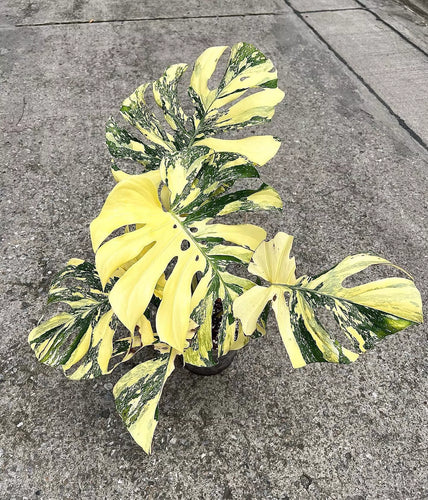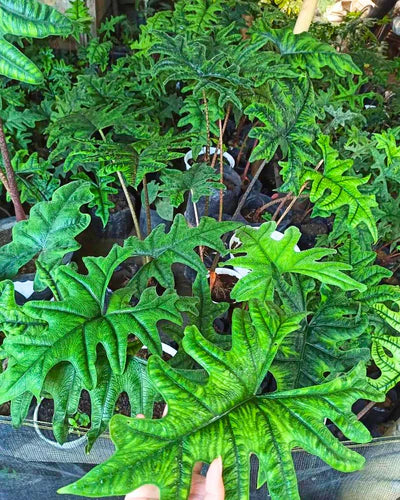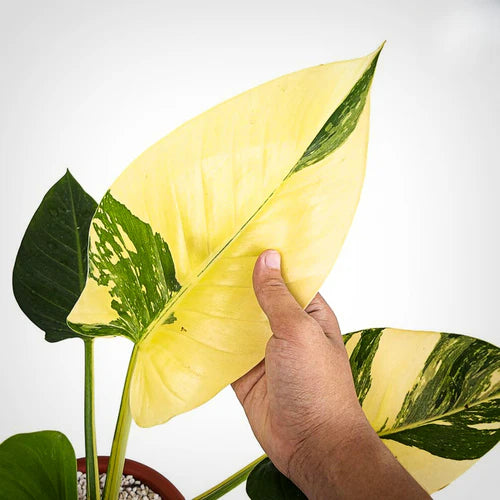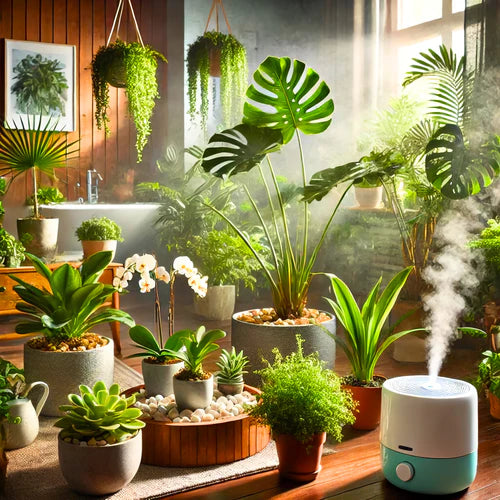6 Trending Rare Aglaonema Houseplant Varieties
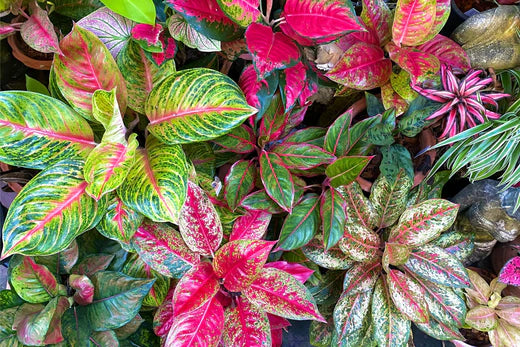
Table of Contents
- Introduction
- Aglaonema Manila Pride Variegated Description & Care Tips
- Kochin Sutra Tricolor - Blushing Pink Splash Aglaonema Description & Care Tips
- Aglaonema Mahasetti Description & Care Tips
- Red Stardust Description & Care Tips
- Aglaonema Golden Madonna Description & Care Tips
- Aglaonema Silver Bay Description & Care Tips
- General Care Tips for Aglaonema
- Light
- Water
- Soil
- Temperature and Humidity
- Fertilization
- Common Problems and Solutions
- Aglaonema FAQ
- Benefits of Growing Aglaonema
- Conclusion
Introduction
Aglaonema, also known as Chinese Evergreens, are beloved for their striking foliage, easy care requirements and many varieties. These tropical houseplants bring a touch of the exotic into your home with their vibrant colors and unique patterns. In this article, we will explore six trending rare Aglaonema varieties that will make a stunning addition to any plant collection. We will provide detailed descriptions and care tips for each, ensuring you have all the information needed to keep these beauties thriving.
Aglaonema Manila Pride Variegated Description & Care Tips
Description
The Aglaonema Manila Pride Variegated is a showstopper with its broad, glossy leaves adorned with cream and green variegation. This Aglaonema variety is prized for its striking contrast and elegant appearance, making it a favorite among houseplant enthusiasts.
Care Tips
- Light: Prefers bright, indirect light but can tolerate lower light conditions.
- Water: Keep the soil consistently moist but not soggy. Allow the top inch of soil to dry out between waterings.
- Soil: Use a well-draining potting mix.
- Temperature and Humidity: Thrives in temperatures between 65-75°F (18-24°C) and enjoys higher humidity levels.
- Fertilization: Feed with a balanced liquid fertilizer every month during the growing season.
Learn more about Aglaonema Manila Pride Variegated
Kochin Sutra Tricolor - Blushing Pink Splash Aglaonema Description & Care Tips
Description
The Kochin Sutra Tricolor, also known as Blushing Pink Splash Aglaonema, features stunning pink and green leaves that add a splash of color to any space. Its unique variegation makes it a standout piece in any plant collection.
Care Tips
- Light: Prefers bright, indirect light. Avoid direct sunlight, which can scorch the leaves.
- Water: Water when the top inch of soil feels dry. Ensure proper drainage to prevent root rot.
- Soil: A peat-based potting mix with perlite works well.
- Temperature and Humidity: Ideal temperatures range from 65-80°F (18-27°C). Appreciates higher humidity but can adapt to normal household levels.
- Fertilization: Use a balanced liquid fertilizer every 4-6 weeks during the growing season.
Discover more about Kochin Sutra Tricolor
Aglaonema Mahasetti Description & Care Tips
Description
Aglaonema Mahasetti boasts striking dark green leaves with contrasting white veins, creating a bold and dramatic look. This Aglaonema plant is perfect for those looking to add a touch of sophistication to their indoor garden.
Care Tips
- Light: Thrives in low to medium light conditions. Avoid direct sunlight.
- Water: Keep the soil evenly moist, allowing the top inch to dry out between waterings.
- Soil: Use a well-aerated potting mix.
- Temperature and Humidity: Prefers temperatures between 60-75°F (16-24°C) and moderate to high humidity.
- Fertilization: Apply a balanced fertilizer every 2-3 months during the growing season.
Find out more about Aglaonema Mahasetti
Aglaonema Red Stardust Description & Care Tips
Description
The Red Stardust Aglaonema is known for its striking red and green foliage. The vibrant red speckles on its leaves make it a popular choice for adding a splash of color to indoor spaces.
Care Tips
- Light: Prefers bright, indirect light but can tolerate low light conditions.
- Water: Water when the top inch of soil is dry. Avoid overwatering.
- Soil: A well-draining potting mix is ideal.
- Temperature and Humidity: Best kept in temperatures between 65-80°F (18-27°C). Higher humidity levels are beneficial.
- Fertilization: Feed with a balanced liquid fertilizer every 4-6 weeks during the growing season.
Explore more about Red Stardust
Aglaonema Golden Madonna Description & Care Tips
Description
Aglaonema Golden Madonna features beautiful green leaves with striking yellow variegation. This variety is highly sought after for its unique coloration and ease of care.
Care Tips
- Light: Bright, indirect light is ideal. Can tolerate low light but may lose some variegation.
- Water: Water when the top inch of soil is dry. Ensure good drainage to prevent root rot.
- Soil: Use a well-draining, peat-based potting mix.
- Temperature and Humidity: Prefers temperatures between 65-75°F (18-24°C) and moderate to high humidity.
- Fertilization: Apply a balanced liquid fertilizer every month during the growing season.
Learn more about Aglaonema Golden Madonna
Aglaonema Silver Bay Description & Care Tips
Description
Aglaonema Silver Bay is admired for its broad, silvery-green leaves with dark green edges. This elegant Aglaonema variety adds a touch of serenity and sophistication to any indoor environment.
Care Tips
- Light: Thrives in low to bright, indirect light.
- Water: Keep the soil consistently moist but not waterlogged. Allow the top inch of soil to dry out between waterings.
- Soil: A well-draining potting mix is essential.
- Temperature and Humidity: Ideal temperatures range from 60-75°F (16-24°C). Benefits from higher humidity levels.
- Fertilization: Use a balanced liquid fertilizer every 4-6 weeks during the growing season.
Discover more about Aglaonema Silver Bay
General Care Tips for Aglaonema
Light
Aglaonemas thrive in bright, indirect light but are also known for their ability to adapt to lower light conditions. Avoid direct sunlight as it can scorch the leaves.
Water
Water your Aglaonema when the top inch of soil feels dry. It's crucial to maintain a balance - keeping the soil moist but not waterlogged. Overwatering can lead to root rot, while underwatering can cause leaf browning and wilting.
Soil
A well-draining potting mix is essential for Aglaonemas. A mixture of peat, perlite, and potting soil provides the ideal environment for root growth and prevents water from accumulating around the roots.
Temperature and Humidity
Aglaonemas prefer temperatures between 60-80°F (16-27°C). They thrive in higher humidity but can adapt to average household humidity levels. To increase humidity, consider placing a humidifier nearby or using a pebble tray.
Fertilization
Feed your Aglaonema with a balanced liquid fertilizer every 4-6 weeks during the growing season (spring and summer). Reduce feeding frequency during the fall and winter months when the plant's growth slows down.
Common Problems and Solutions
- Yellow Leaves: Often a sign of overwatering. Ensure the soil is well-draining and allow it to dry out slightly between waterings.
- Brown Leaf Tips: Can indicate low humidity or underwatering. Increase humidity and check your watering routine.
- Pests: Common pests include spider mites and mealybugs. Treat infestations with insecticidal soap or neem oil, and ensure good air circulation around the plant.
- Leaf Drop: Sudden temperature changes or drafts can cause leaves to drop. Keep your plant away from vents and drafty windows.
Aglaonema Propagation
Propagating Aglaonemas can be a rewarding process. The most common methods include stem cuttings and division. To propagate by stem cuttings:
- Cut a healthy stem with several leaves.
- Place the cutting in water or directly into soil.
- Ensure the cutting receives bright, indirect light.
- Keep the soil or water consistently moist.
Propagation by division involves separating the root ball into smaller sections and repotting them individually.
Benefits of Growing Aglaonema
Aglaonemas are not only beautiful but also offer several benefits:
- Air Purification: They are known to purify indoor air by removing toxins.
- Low Maintenance: Their easy-care nature makes them ideal for busy lifestyles.
- Pet Friendly Options: While some Aglaonemas are toxic to animals, selecting pet-friendly varieties ensures safety for households with pets.
- Aesthetic Appeal: With various colors and patterns, they enhance the visual appeal of any space.
For more detailed scientific insights into the benefits of indoor plants like Aglaonemas, refer to this study.
FAQ
Q: Are Aglaonemas toxic to pets? A: Yes, many Aglaonema varieties are toxic to pets. It's crucial to keep them out of reach of animals. If you're looking for pet-friendly options, research specific varieties or consult with your plant supplier.
Q: How often should I water my Aglaonema? A: Water your Aglaonema when the top inch of soil feels dry. Consistency is key, but avoid overwatering.
Q: Can Aglaonemas grow in low light?
A: Yes, Aglaonemas can adapt to low light conditions, making them suitable for various indoor environments. However, they will grow a lot faster, fuller, and develop bigger leaves the more light you give them. It's essential to keep the leaves clean to maximize light absorption and support photosynthesis.
Extra Tip: To help with photosynthesis and pest prevention, regularly wash off the leaves in the shower or manually clean the dust off them. This practice not only keeps the plant looking vibrant but also reduces the risk of pest infestations.
Q: What is the best soil mix for Aglaonema?
A: A well-draining mix of peat, perlite, and potting soil is ideal. Aglaonema plants prefer slightly acidic soil with a pH level between 5.5 and 6.5. To achieve the perfect texture and nutrient balance, here's a detailed guide to the best medium for Aglaonema plants:
- pH Level: Use a pH meter or test kit to ensure your soil's pH is between 5.5 and 6.5, which is slightly acidic and ideal for Aglaonemas.
- Texture: Aglaonemas thrive in soil with a loose, well-draining texture. A mix of peat moss, perlite, and vermiculite is excellent for providing adequate drainage and aeration.
- Organic Matter: Rich organic matter is crucial. Use a high-quality potting mix that contains peat moss, compost, or other organic materials to provide essential nutrients.
- Fertilizer: Regular fertilization during the growing season (spring and summer) is beneficial. Use a balanced liquid fertilizer once a month or a slow-release fertilizer every three months.
- Water Retention: The soil should retain moisture without becoming waterlogged. Adding coconut coir or sphagnum moss can help maintain the right moisture level.
- Drainage: To prevent root rot, ensure the soil has excellent drainage. Incorporate perlite, vermiculite, or sand into your potting mix.
- Sterilization: Use sterile soil when repotting to prevent the spread of diseases or pests. Sterilize the soil by baking it in the oven at 180°F for 30 minutes or using a commercial soil sterilizer.
Conclusion
Aglaonemas are a fantastic addition to any indoor garden, offering a variety of colors and patterns that can brighten up any space. By following the care tips provided, you can enjoy these stunning tropical houseplants and watch them thrive. Whether you choose the vibrant Red Stardust or the elegant Silver Bay, each Aglaonema variety brings its own unique charm to your home. Check out the Aglaonema collection for more options and tips on growing these beautiful plants.








